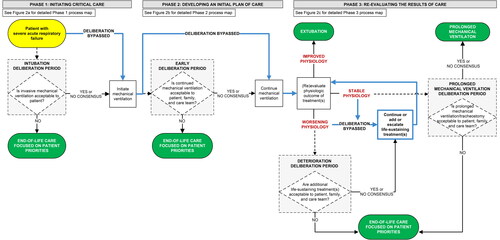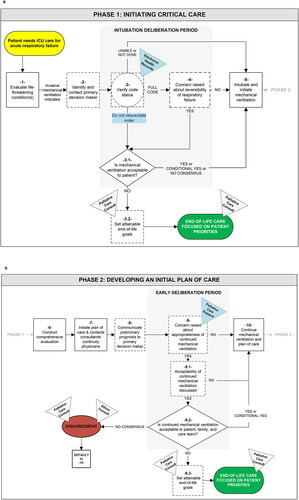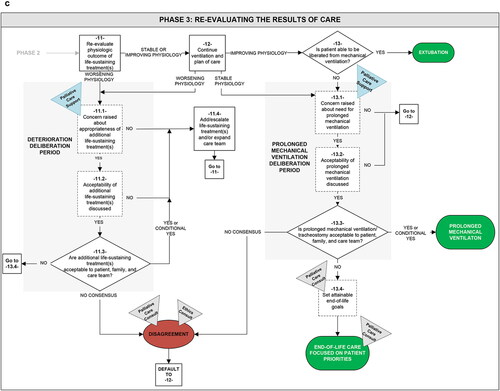Figures & data
Table 1. Demographics and characteristics of study participants.
Figure 1. A summary process map of intensive care delivery for adults with acute respiratory failure who require mechanical ventilation. The current-state process has four major deliberation periods with decision points, yet these opportunities are inconsistently acted on (inconsistent steps represented with dashed lines). The blue pathways represent default processes that unfold if/when deliberation periods are bypassed.

Figure 2. Detailed process maps of intensive care delivery for adults with acute respiratory failure who require mechanical ventilation. Figures 2a–c depict the detailed processes of care within each phase of care delivery. Squares represent key process steps; squares containing a circle represent a step during which existing information is verified (i.e. a verification step); diamonds represent decision steps; and upside-down triangles indicate system-level resources available during a process step. Dashed lines indicate that a step is performed inconsistently at the patient level. “YES” demonstrates the direction of the process if the step occurs and “NO” demonstrates the direction of the process if the step does not occur. Features of the process that may differ between intensive care units (ICU) are represented in blue. Major process events are numbered to demonstrate sequence and facilitate reference; sub-processes that arise from major process events are indicated with decimals. The term “conditional yes” refers to an agreement that a treatment is acceptable to use with specific limitations or conditions for continuation (e.g. a time-limited trial of mechanical ventilation to evaluate response to therapies or pending diagnostic/prognostic information).
Abbreviations: ICU = intensive care unit; MV = mechanical ventilation


Table 2. Key inconsistencies in the process of deliberation about life-sustaining treatments for patients with acute respiratory failure.
